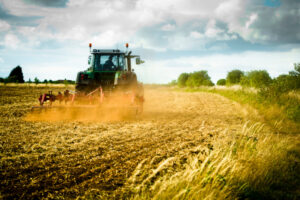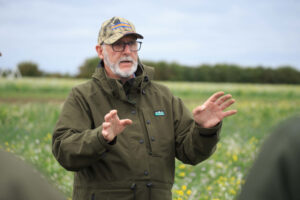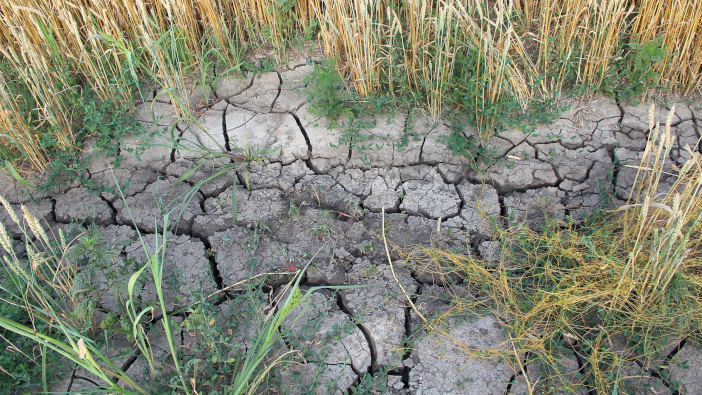The earliest harvest in nearly two decades has followed unprecedented drought conditions this year. We speak to Hutchinsons’ Dick Neale to find out what this means for crop establishment in the coming autumn
As we speak to Dick, technical manager at Hutchinsons, there is rain forecast. The first decent amount of rain since the spring. One worries that this will instantly make the article outdated, but he isn’t concerned.
“It’s going to take a significant amount of rain to change field conditions before growers start looking at cultivations and drilling,” he says. “My advice to everyone at the moment would be patient, allow soils to regain some moisture and take time to consider future operations.”
Soil type will be crucial looking ahead, he adds. “Those clay soils, or soils with more than 30% clay content, may see that they are in a very good position. These soils will have naturally cracked and fissured and will hold onto moisture. It’s likely that these will not need full-field cultivation work done to depth in the autumn.”
Sandy soils, or soils with high chalk or calcium levels, will be a different story. This will have set like concrete and cannot self-structure in the same way as clay. As these soils require cultivation ahead of drilling, now is the time to observe the field and prepare for operations in the coming months.
“This isn’t the ideal time to be conducting thorough soil assessments, but it is the ideal time to see where problems might be,” Dick says. “While crops are thinner because nitrogen application timings were compromised, and many crops were too stressed to take up nutrients, they should be even.

“If there are parts of the fields where this isn’t the case, growers should be considering the reason for this – whether it’s high-traffic areas on the headland, or damage that occurred in previous years, or it’s simply a change in soil texture.”
Overall, Dick believes that soils should be in relatively good condition, despite this dry year coming after two very wet seasons. “There was a lot of damage done to soils in 2023 because of the rain, but for many conditions were good for establishment in 2024, which meant much of the remedial work has already been completed.”
Just add moisture…
It’s been said time and time again, but the best tool in a farmer’s arsenal is the spade. Dick recommends that where problem areas are identified, growers go out and dig to identify what is causing the issue.
“Farmers will quite rightly point out that the ground is rock hard at the moment, but if all we’re waiting for is moisture than that is easy to add,” he says. “We’re only looking for around ½ sq m of ground, so take around 20 litres of water out to the field, soak the areas where you want to dig.”
This will enable growers to find out if compaction is affecting crops, or likely to affect them next season. On sand soils, you’ll also be able to see to what extent the ground will slump, which will inform cultivation depth ahead of the drill.
“This is a rare opportunity for growers,” he adds. “The early harvest means that there is no need to rush.”
He says that this time should be used to the fullest. While many will hope to get a cover crop or oilseed rape in early, this may be a mistake, especially in clay soils. While a shower of rain might appear to have put moisture in the ground, it’s possible that there is only enough to push the seed through germination. “Long term forecasts suggest that this period of high pressure will continue, so crops may emerge and then dry out and die at the one-leaf stage.”
Attempting early cultivations, either to produce a stale seedbed or to make progress ahead of autumn drilling, could also backfire. Dick notes that while clay soils will be able to hold onto moisture after being opened – though he maintains that there is little need to attempt this and that current conditions will make it nearly impossible to pull metal through at depth – sand soils have a much lower surface tension and will lose any moisture after being opened.
The existing rooting structures and stubble will also provide the best conditions to absorb any rainfall in the coming weeks. “As I mentioned, it will take a significant amount of rain to change the situation, but farmers will always worry that ‘once it starts, it won’t know when to stop’. With roots in the ground, the soil will be able to absorb rainfall in a controlled way.”

©Tim Scrivener Photographer
An easy season?
While it’s prudent to pay close attention to your fields and ensure that everything is in place ahead of drilling, Dick emphasises that growers should be critical of every operation in the autumn.
“Moving soil is the most expensive thing a grower can do,” he says. “Especially in dry conditions where it takes more horsepower and wearing metal to get the desired outcome.
“Even the justification of blackgrass control doesn’t hold true this year. We’ve been implementing stale seedbeds for years now, and this has been one of the best seasons for control in recent memory, so the near-surface seedbank simply isn’t there to get a good flush.”
Soil sampling could also indicate a reduced need for nitrogen over the coming growing season. While timings were compromised, and in some cases abandoned, and supply chain issues meant that product was delivered late, where nitrogen was applied in the spring plant stress hampered the take-up. Dick notes that this would have been worsened by many using treated urea for the first time, which slows the release of nitrates.
“Once moisture is put back into the soil, there’s a good chance that there will an excess of nitrogen ready to be released to the next crop,” he concludes. “There’s a potential for this to be a cheaper growing season, at least for nitrogen inputs.”
Key takeaways
- Be patient. Cultivating too early could be unnecessary and expensive
- Where problems are identified, moisten the soil and use the spade to identify the issue and at what depth it occurs
- Blackgrass is not the key concern this season, so don’t rush to create a stale seedbed
- Keep existing rooting structures in place to keep soils open for water absorption during rainfall
- Be critical of every operation



